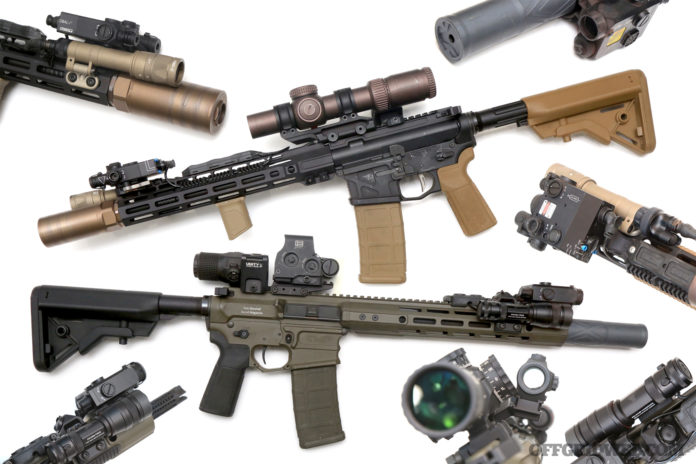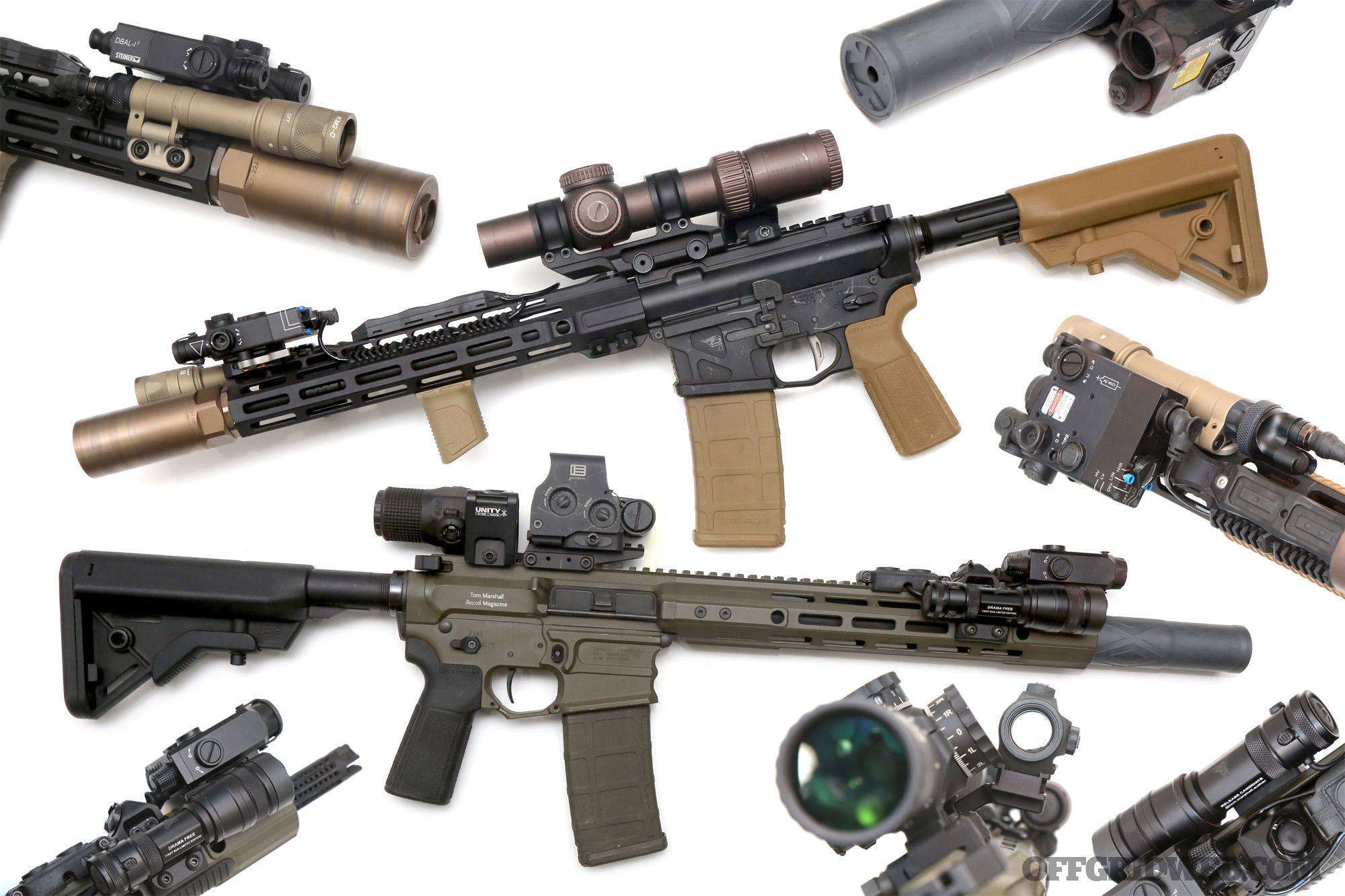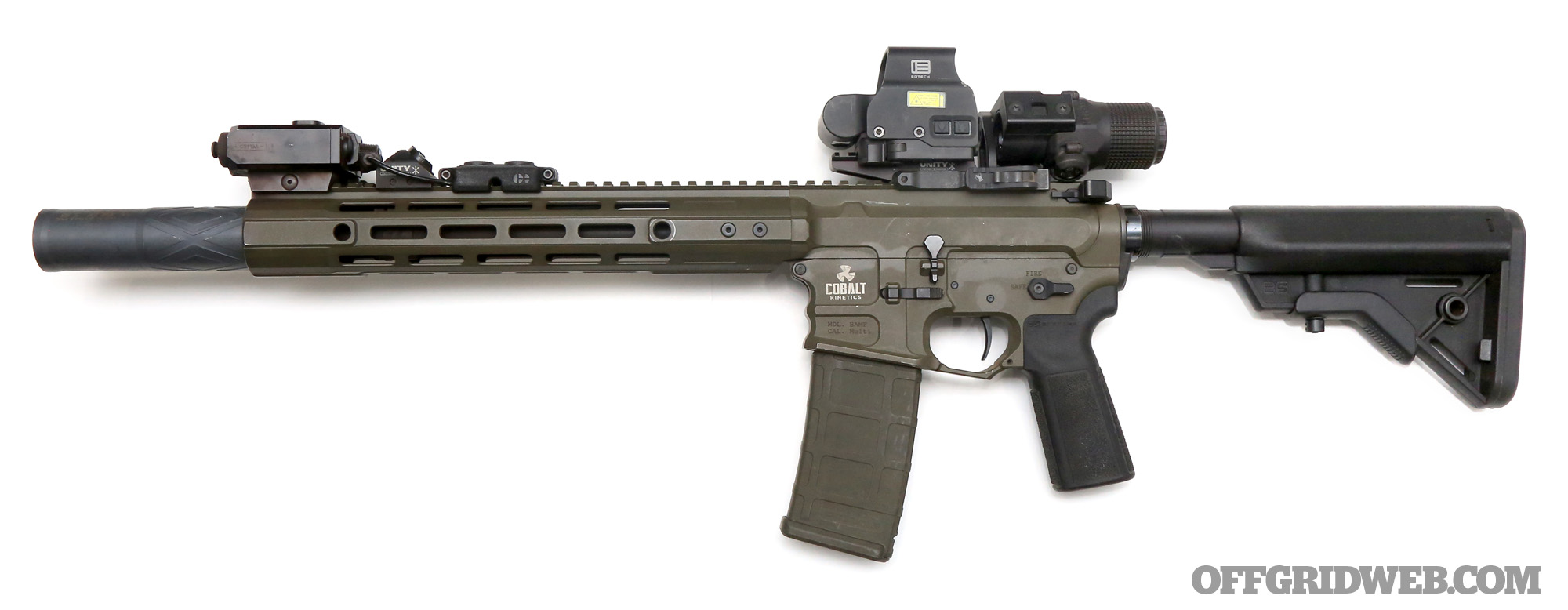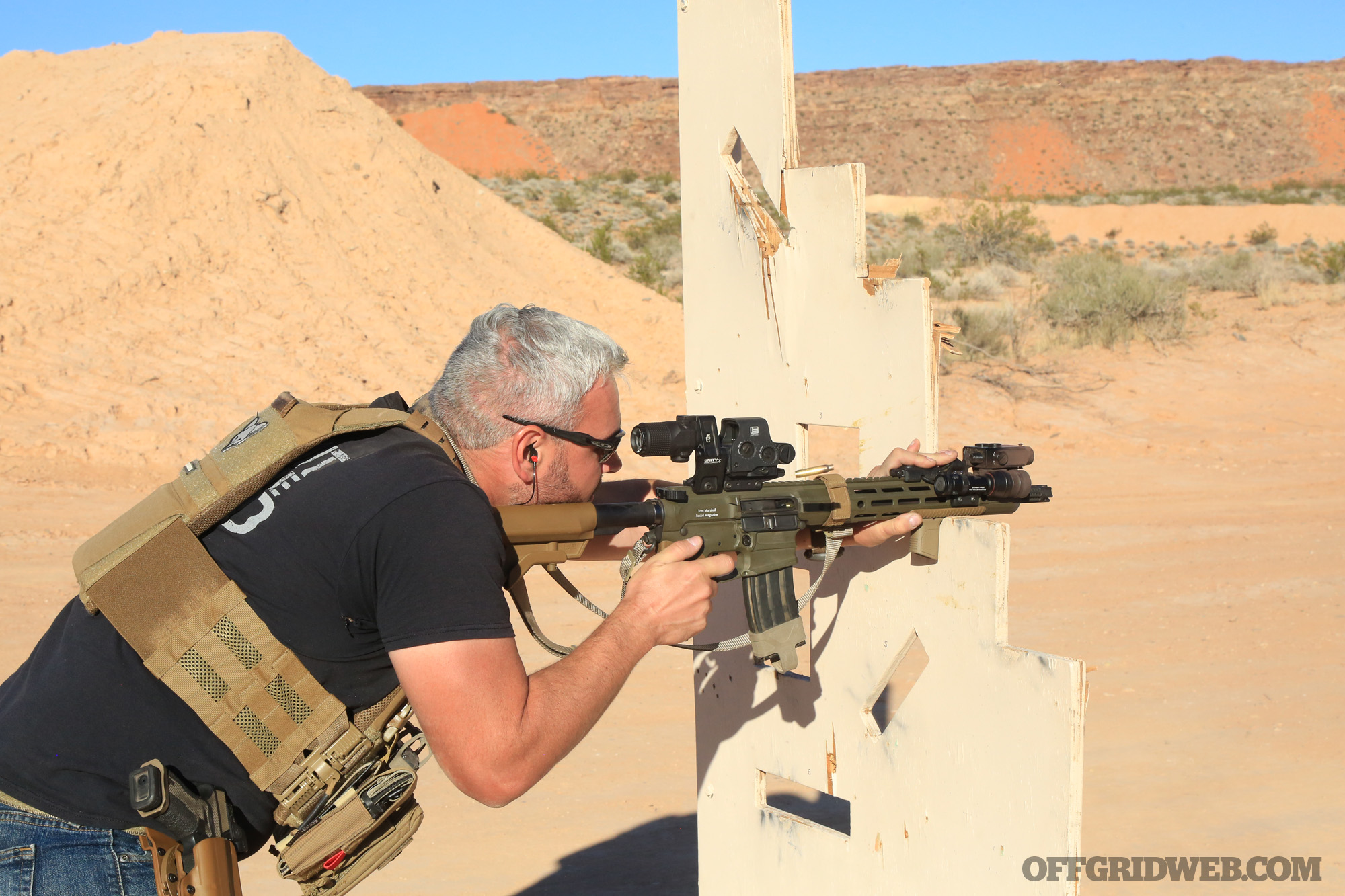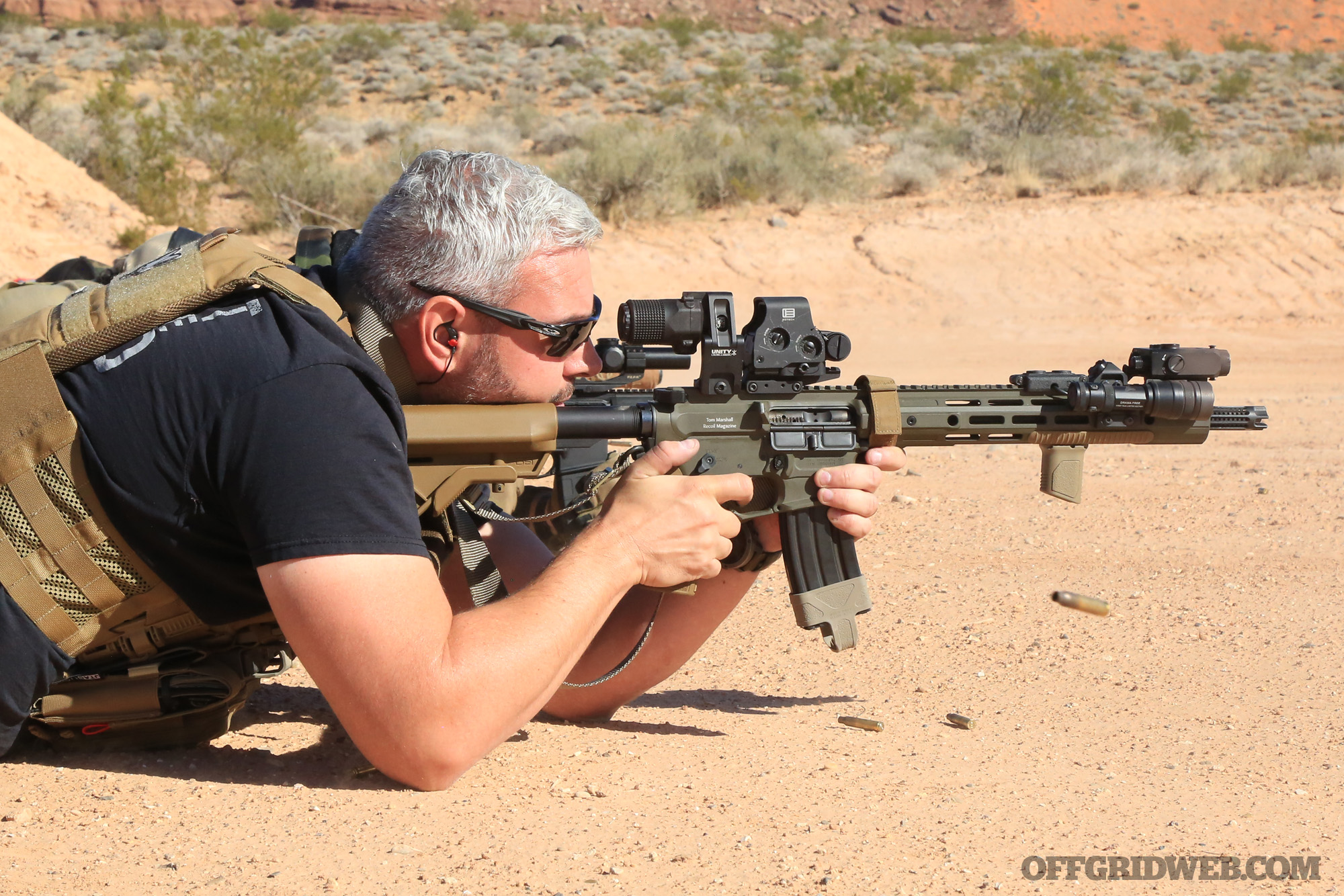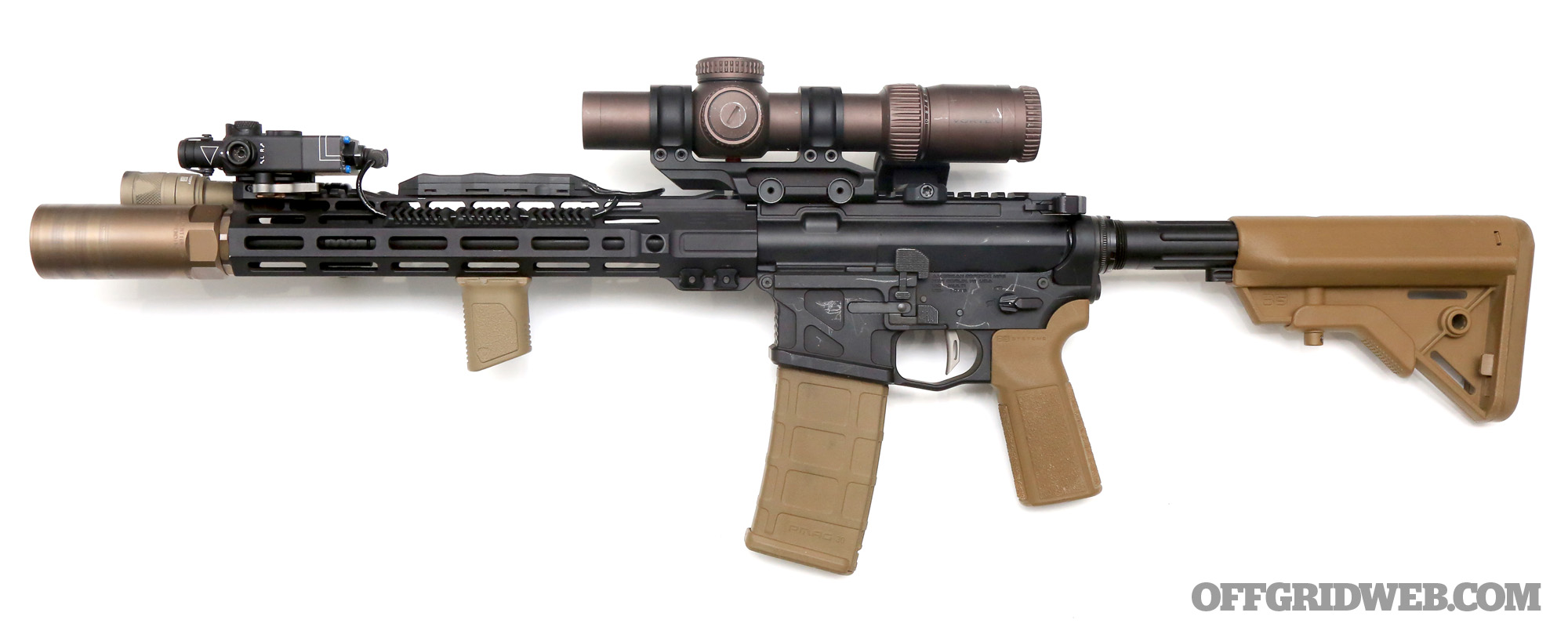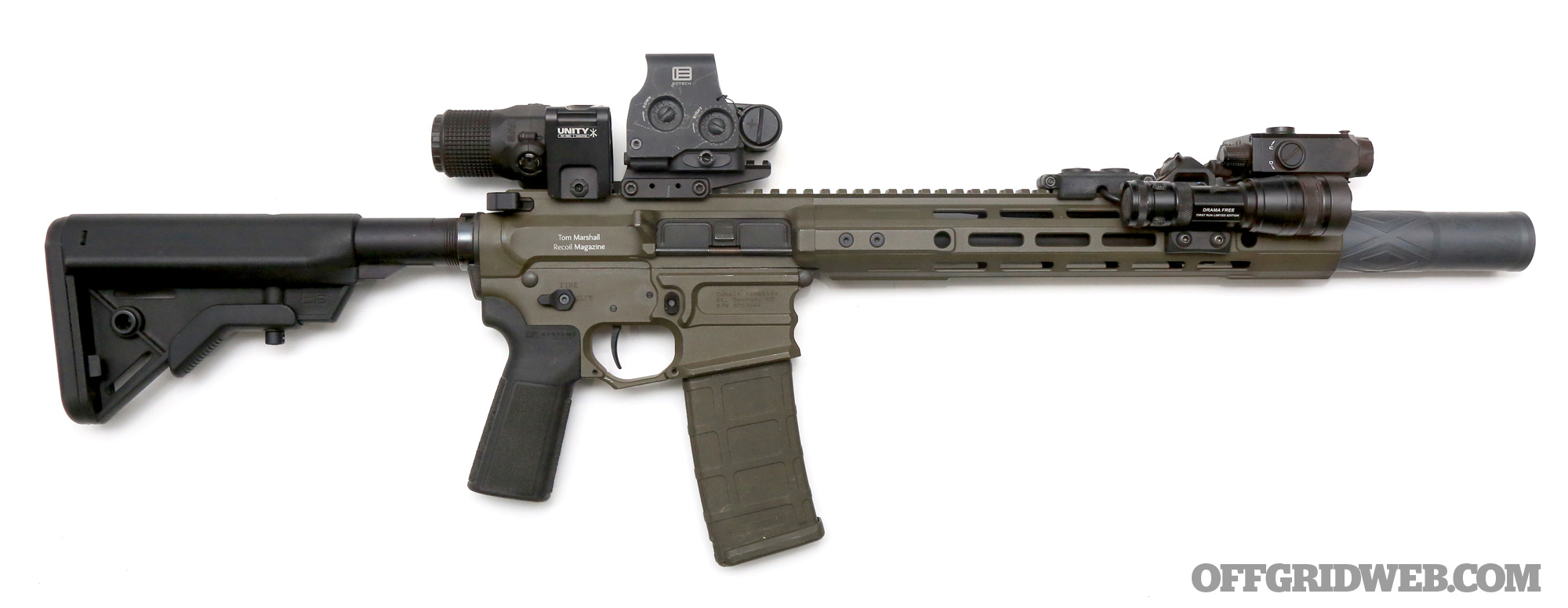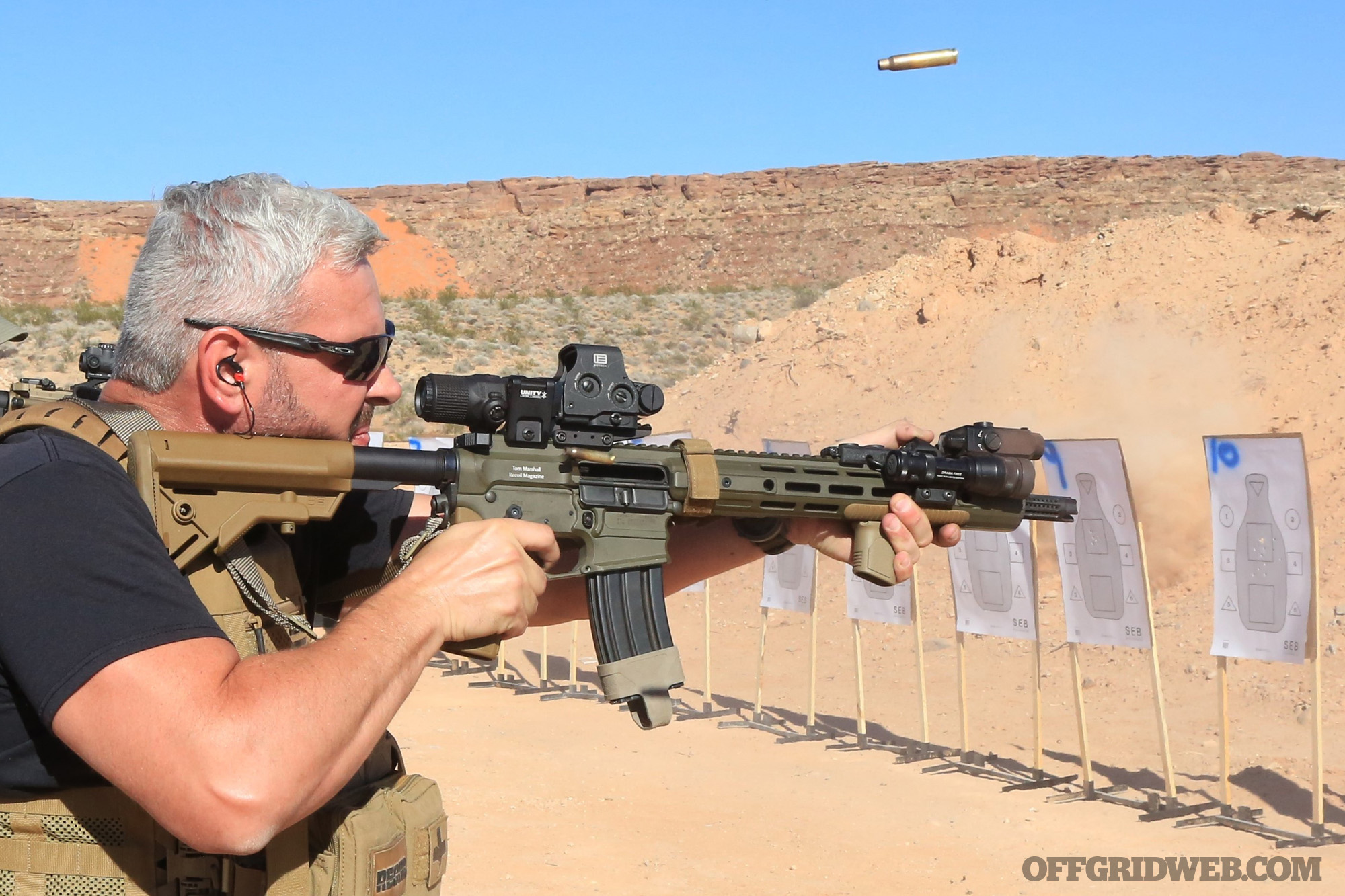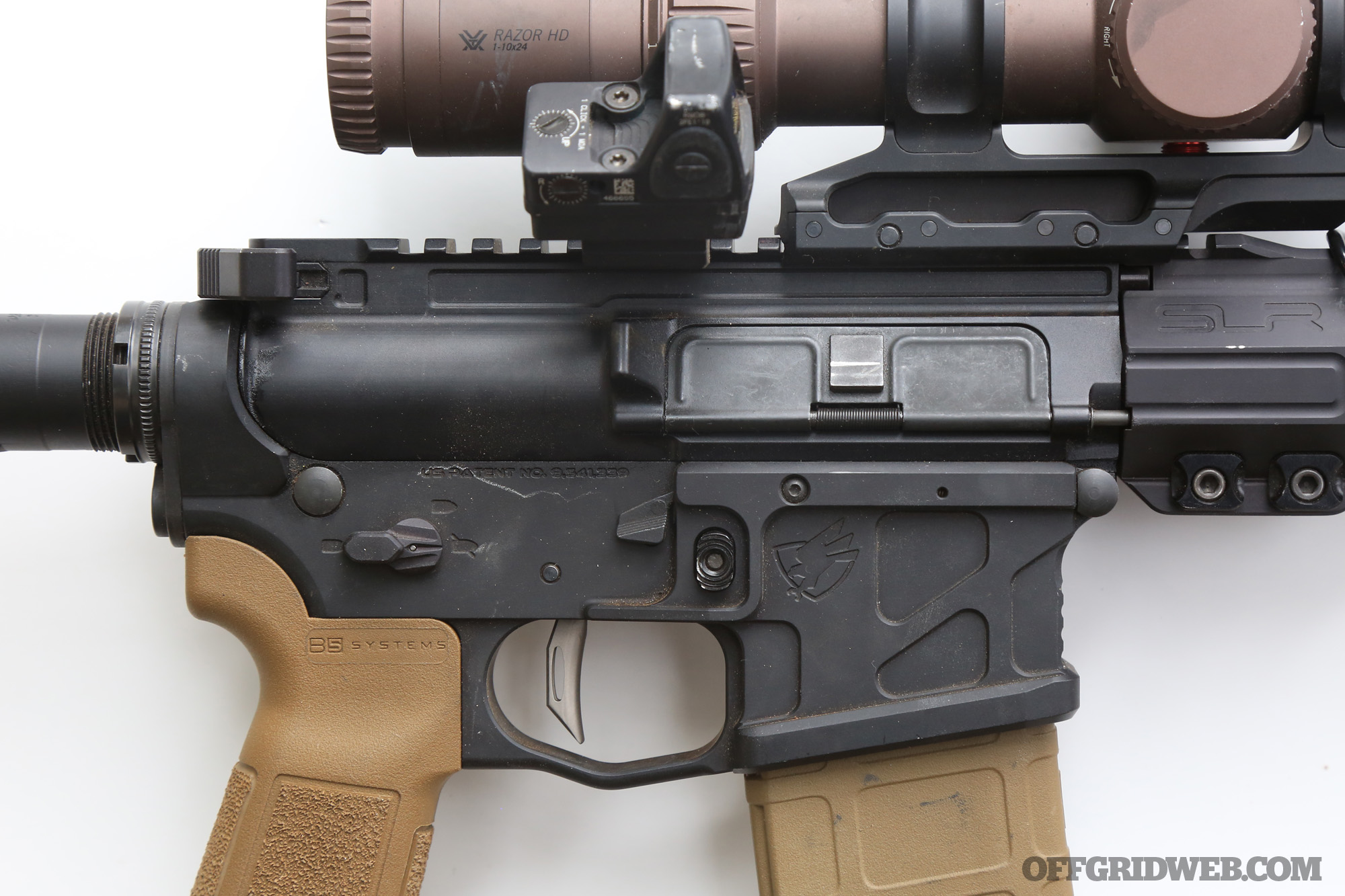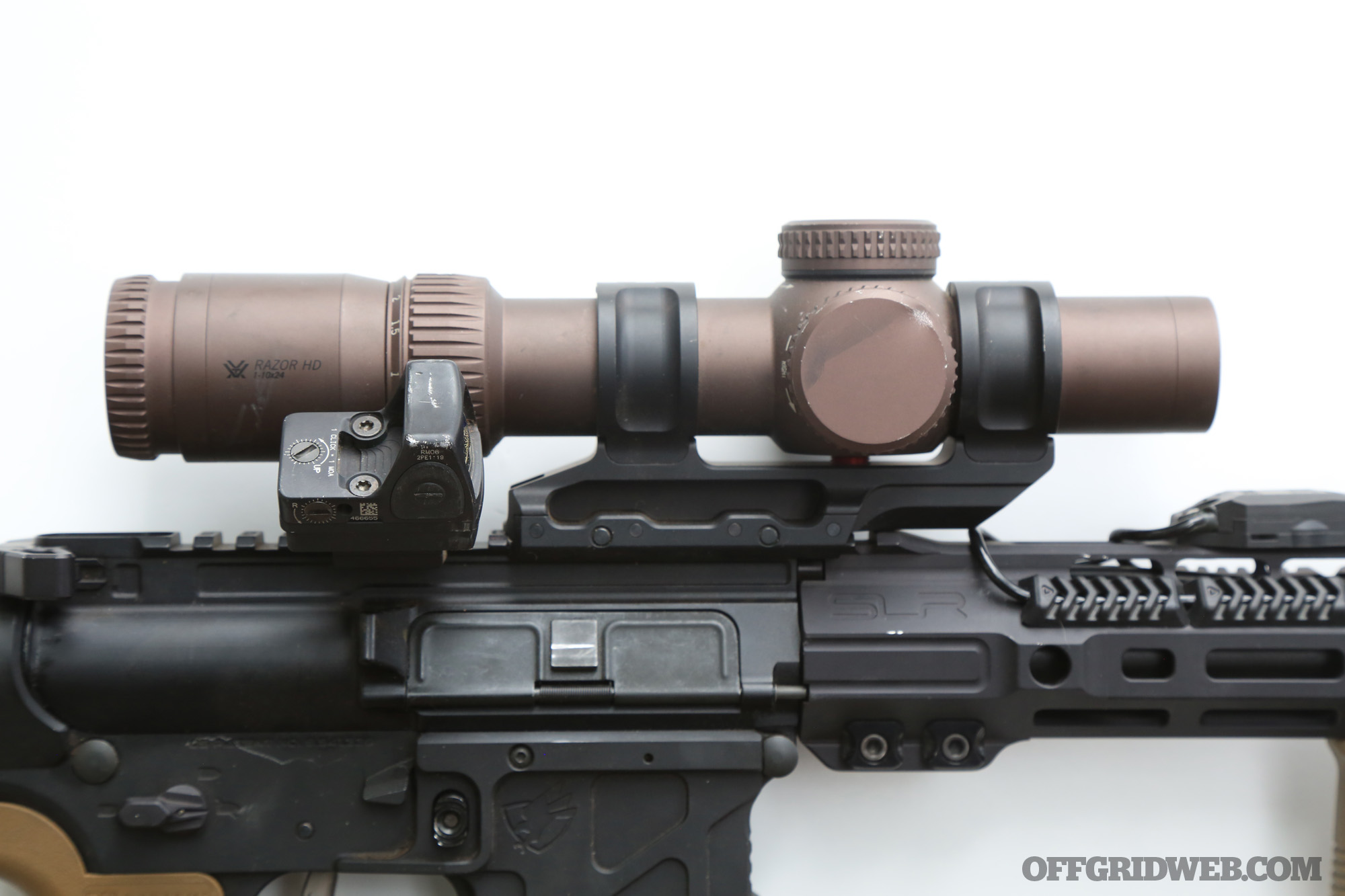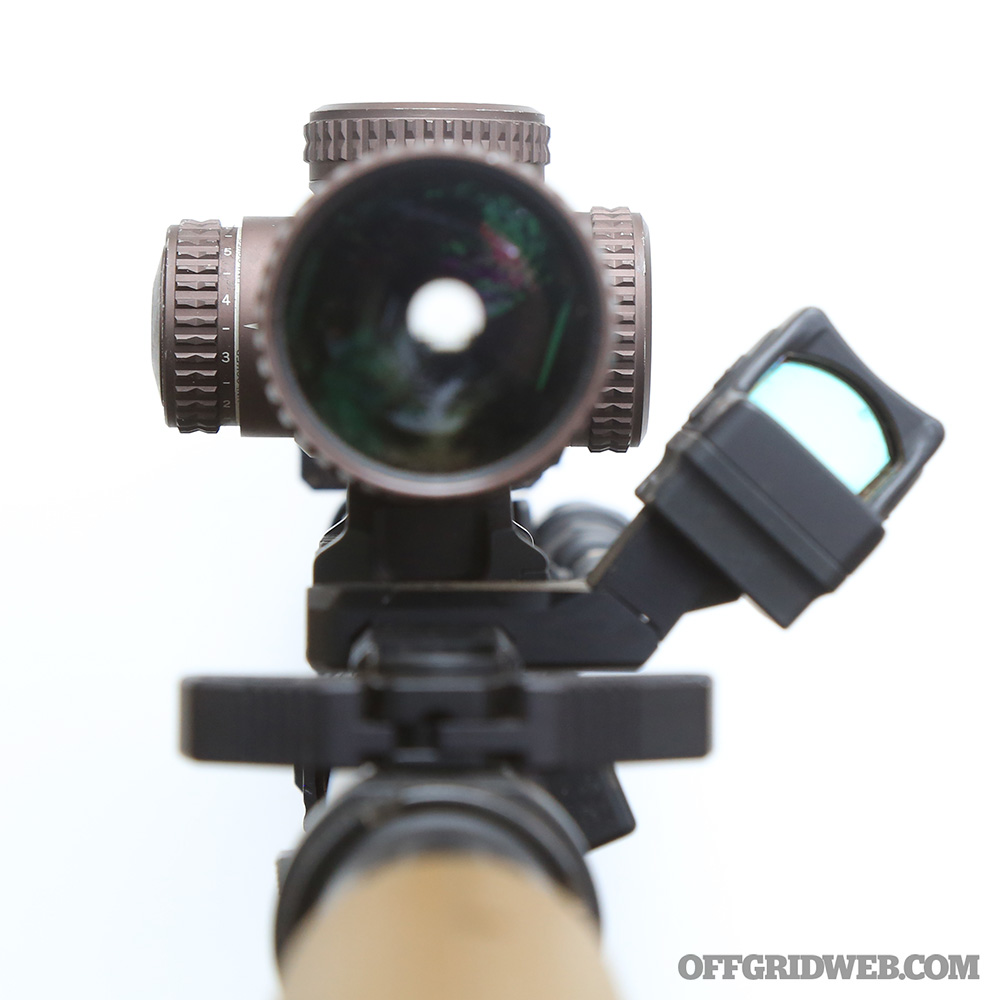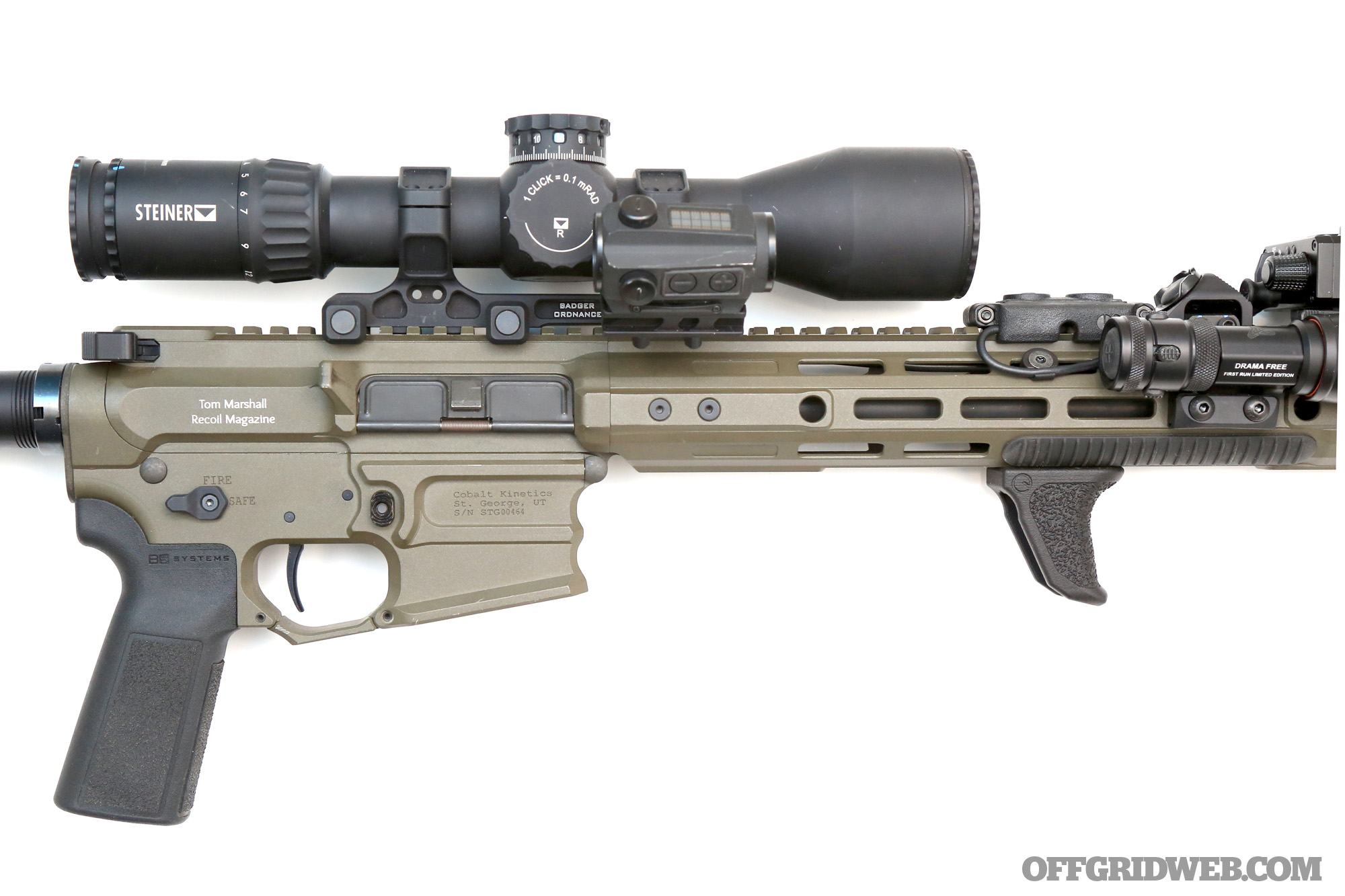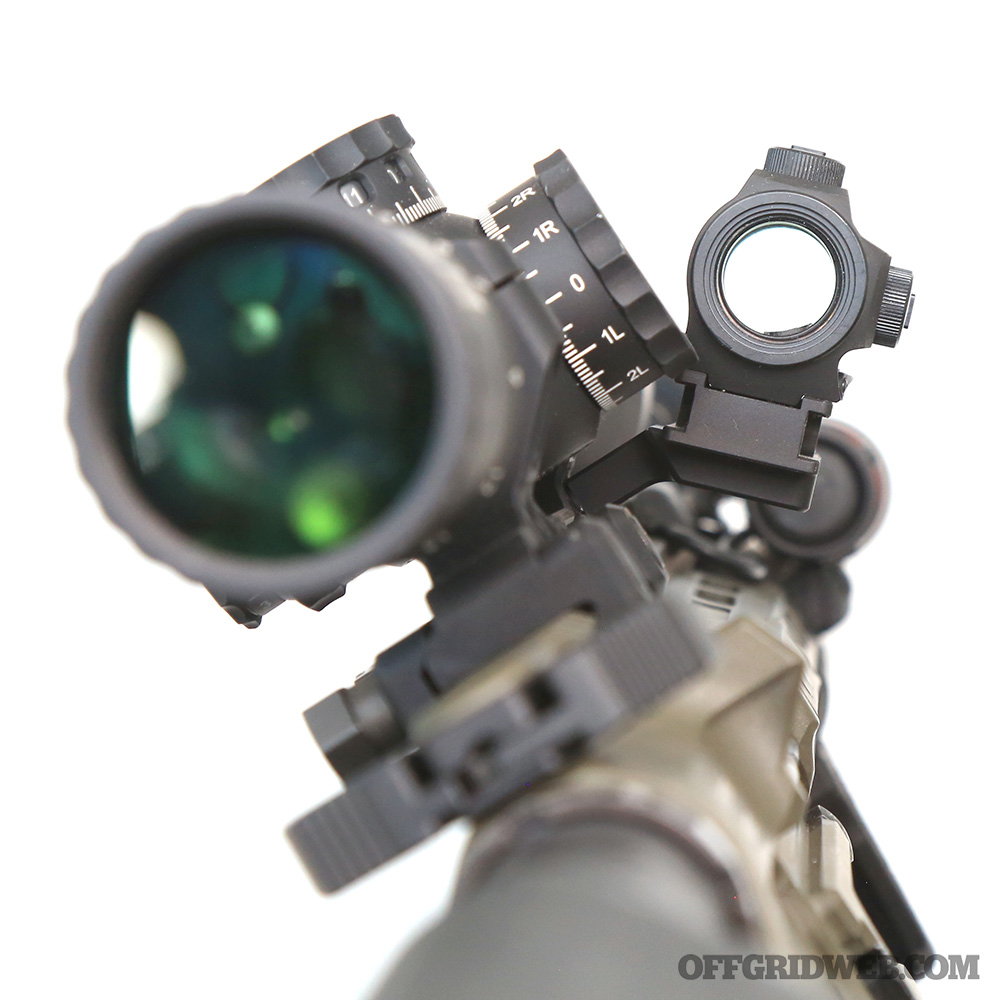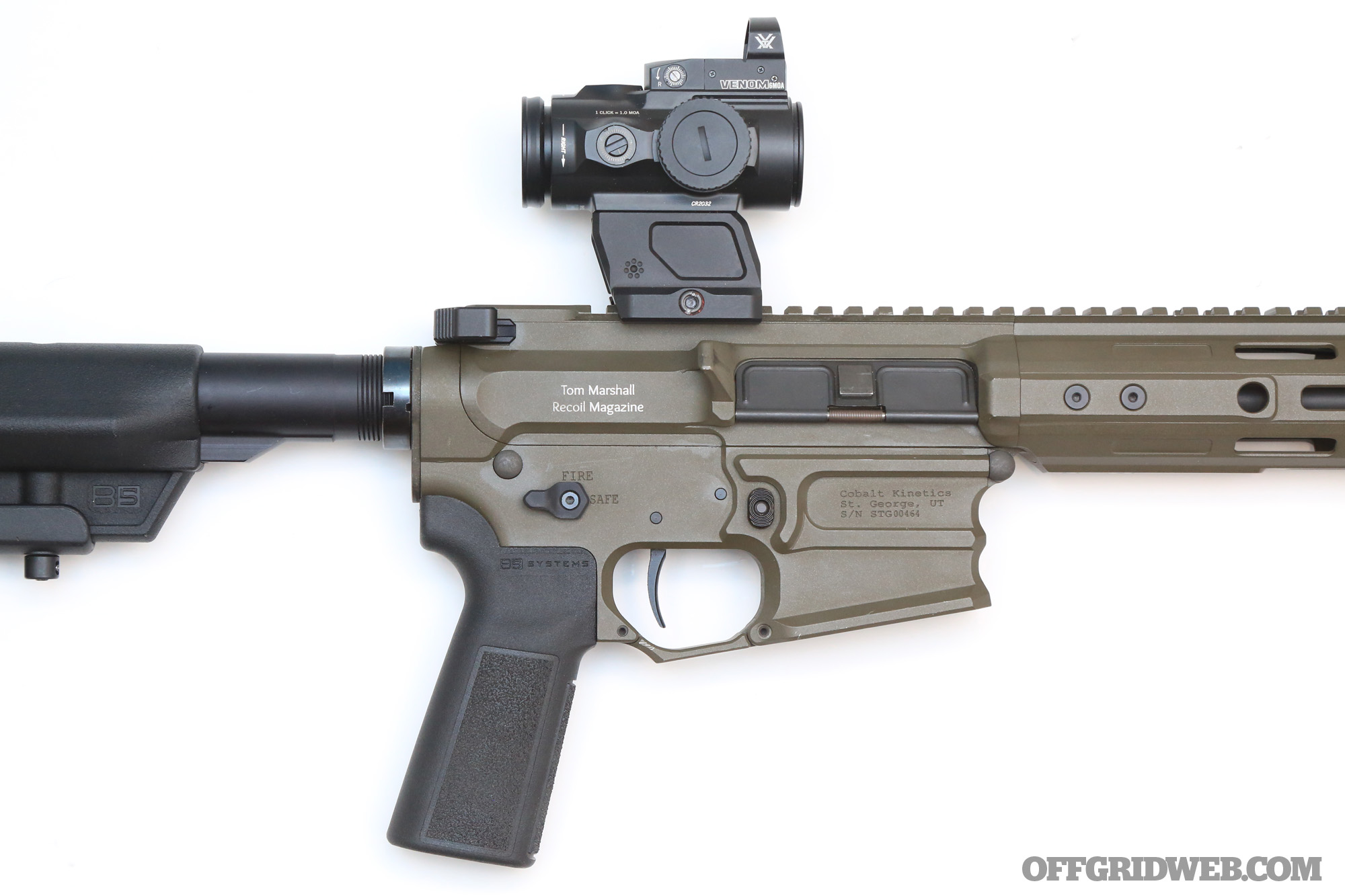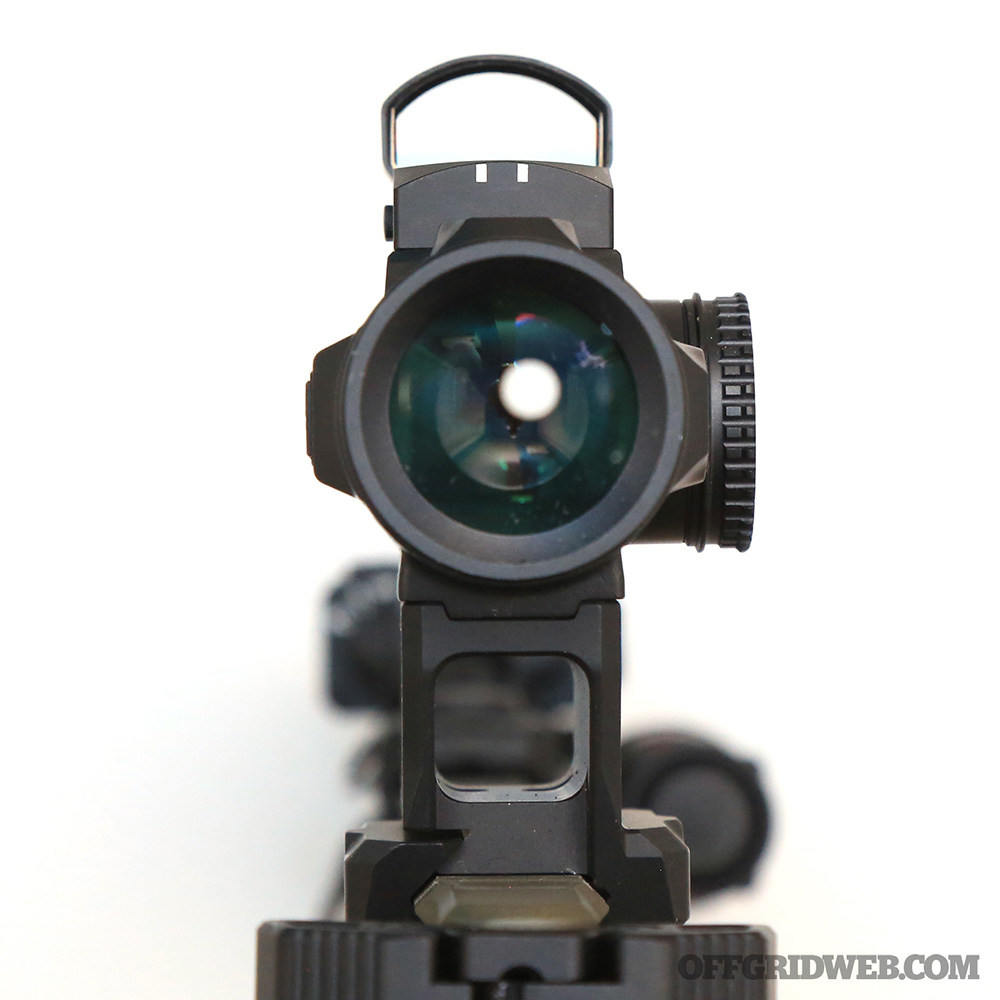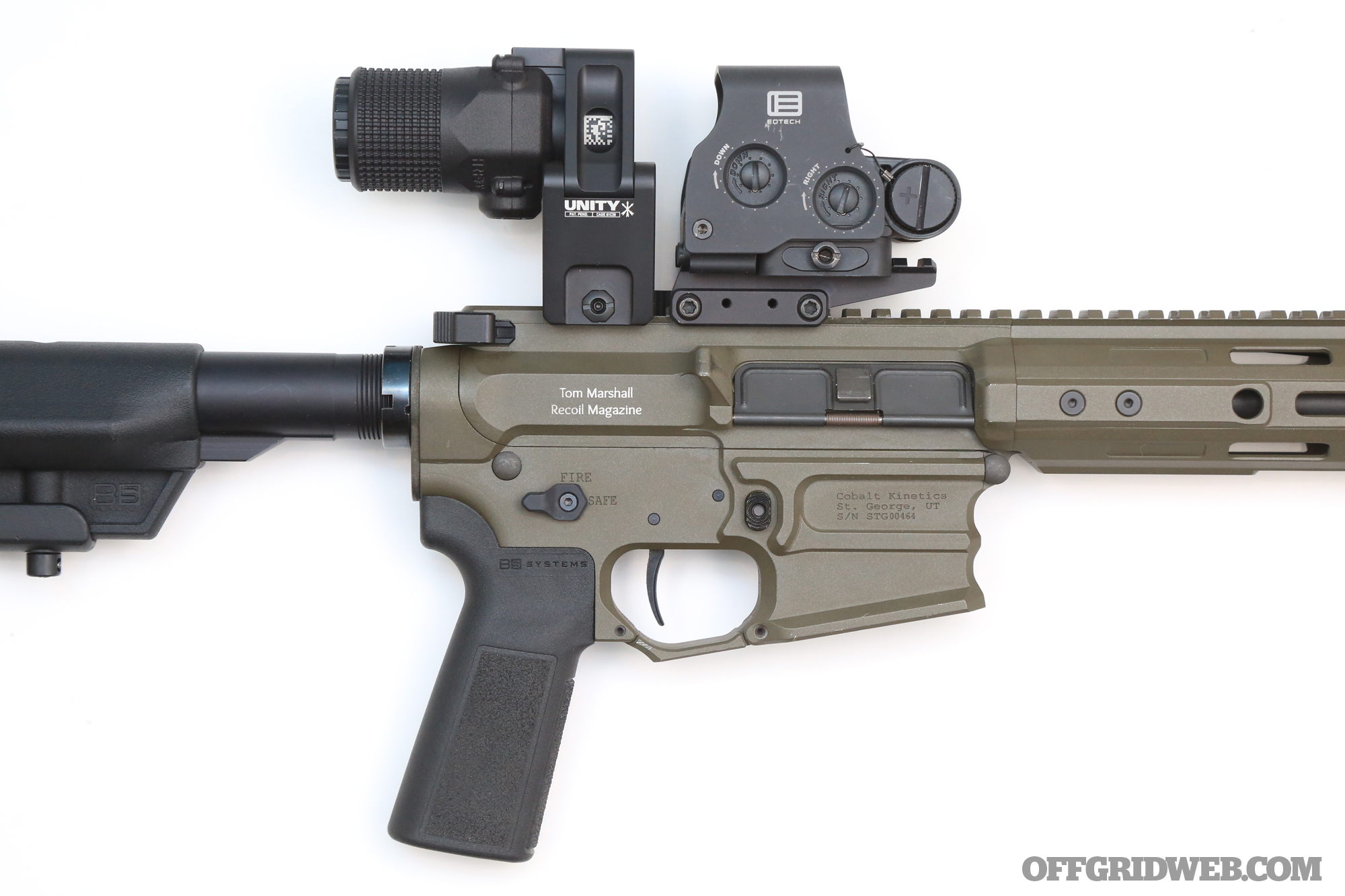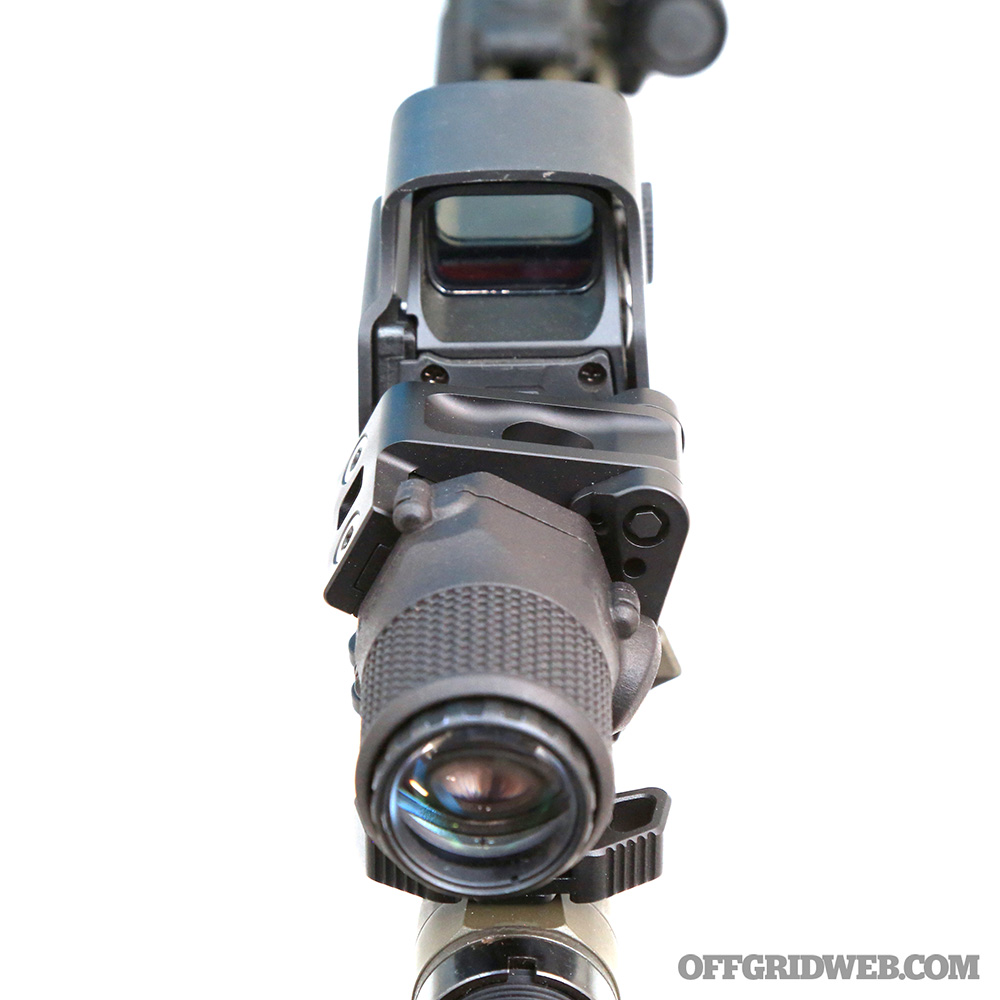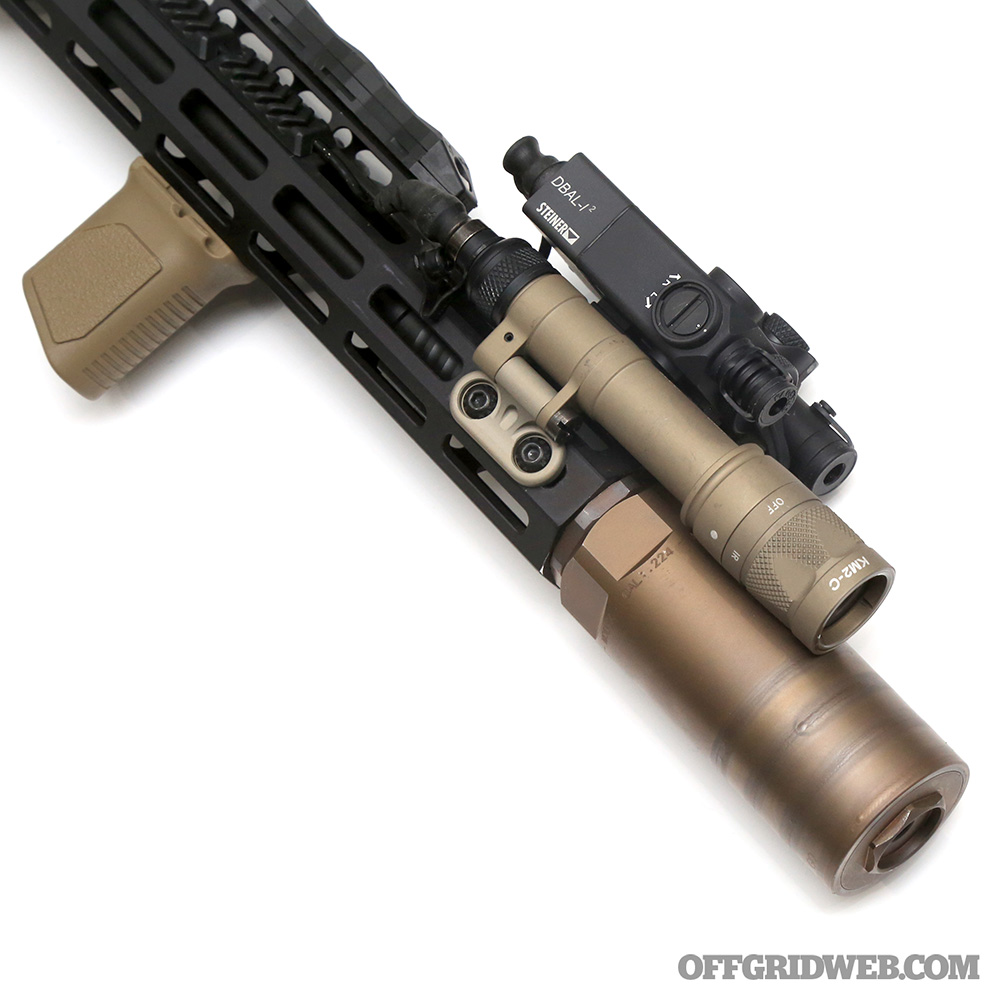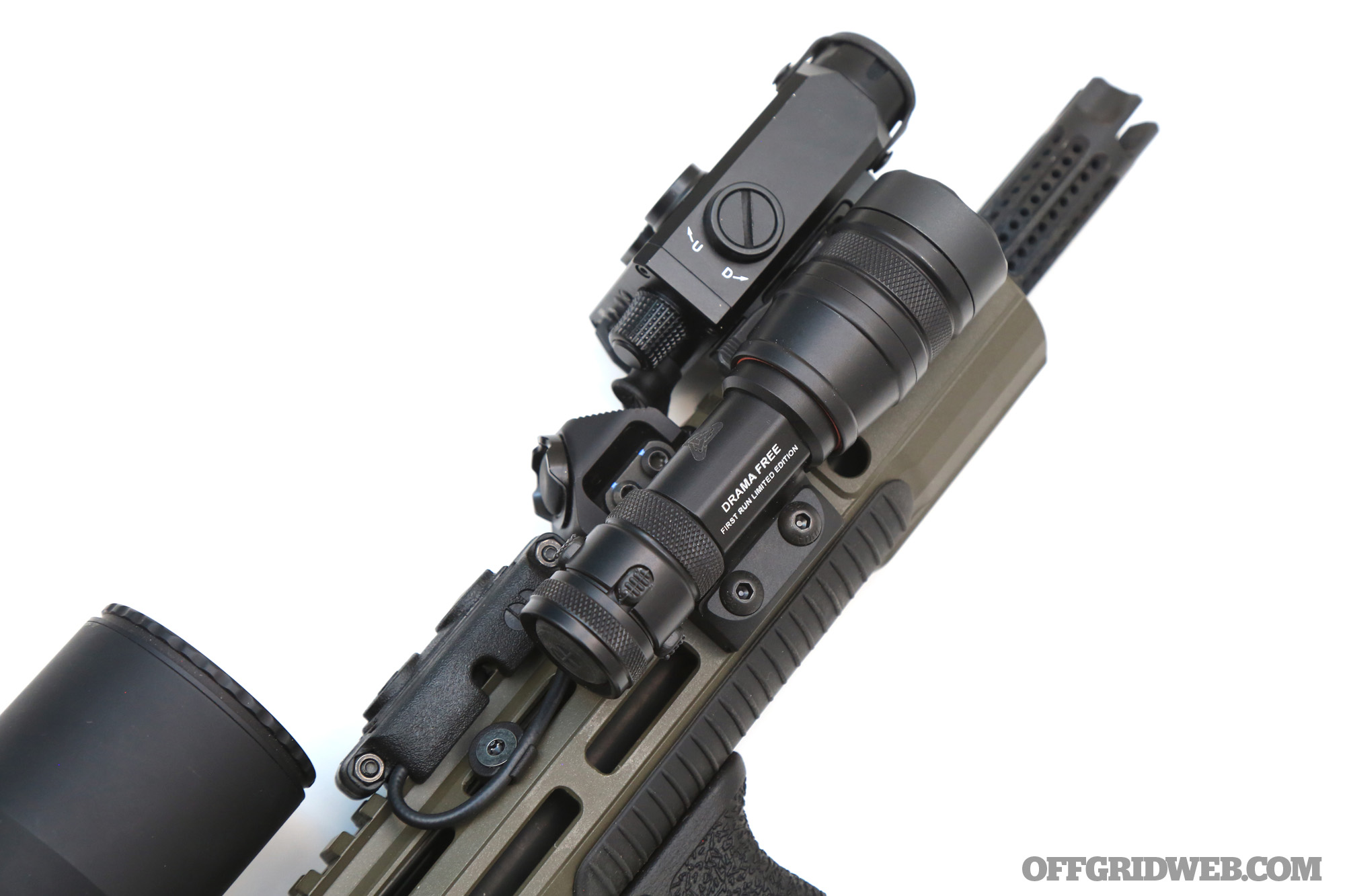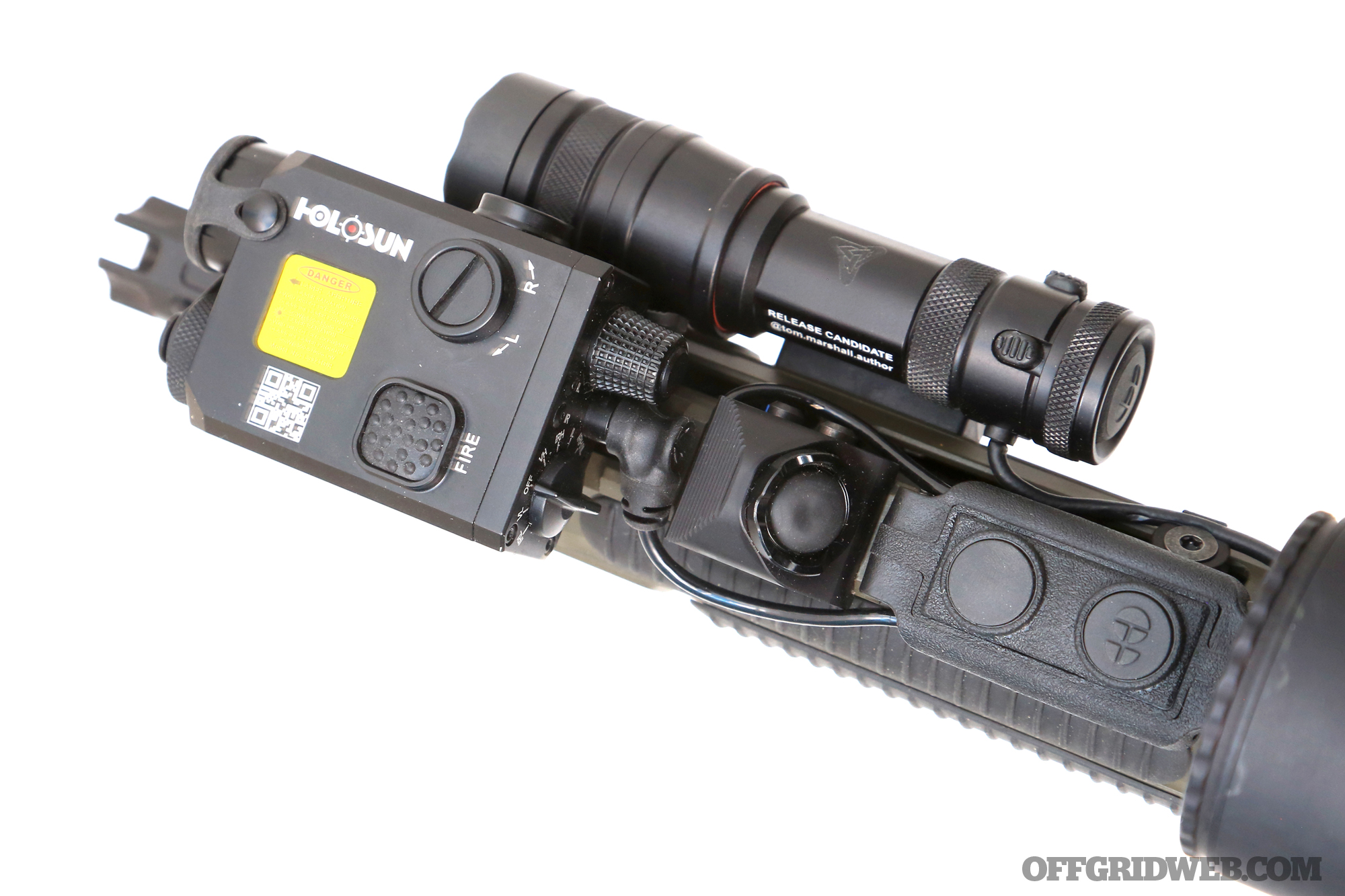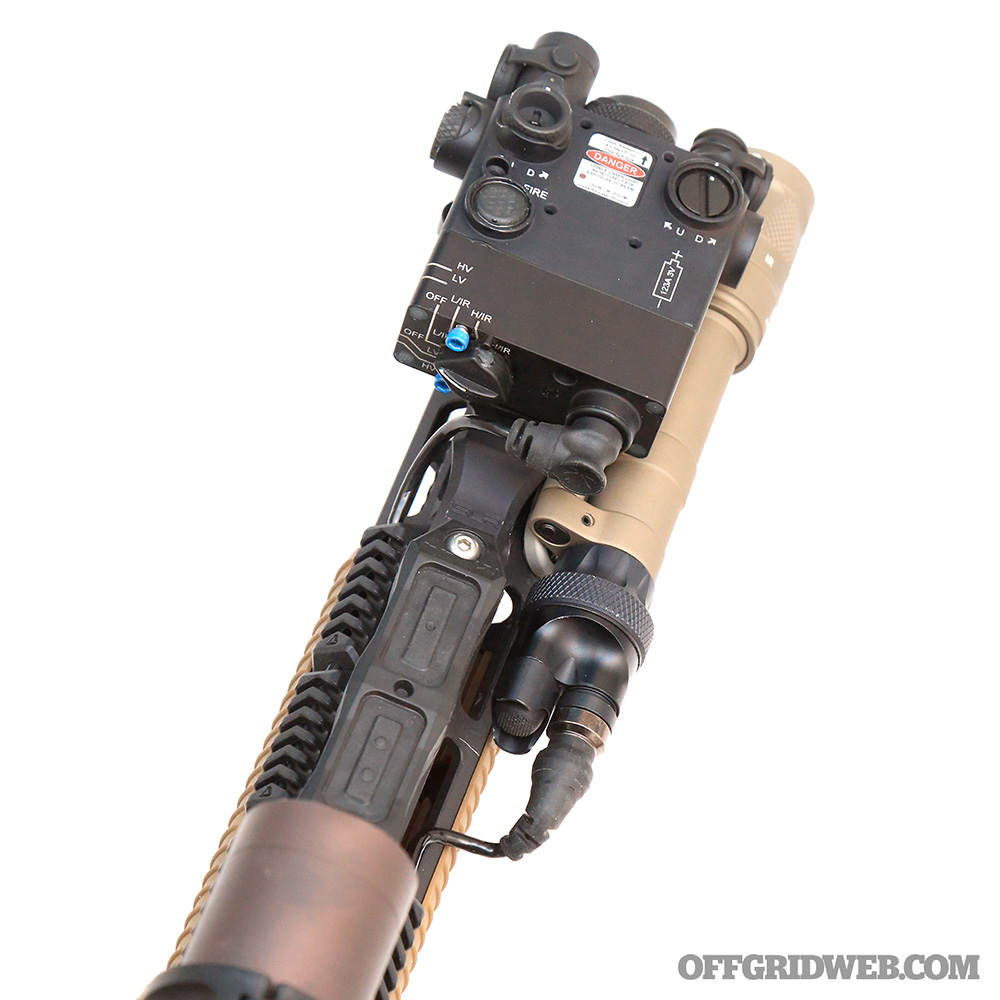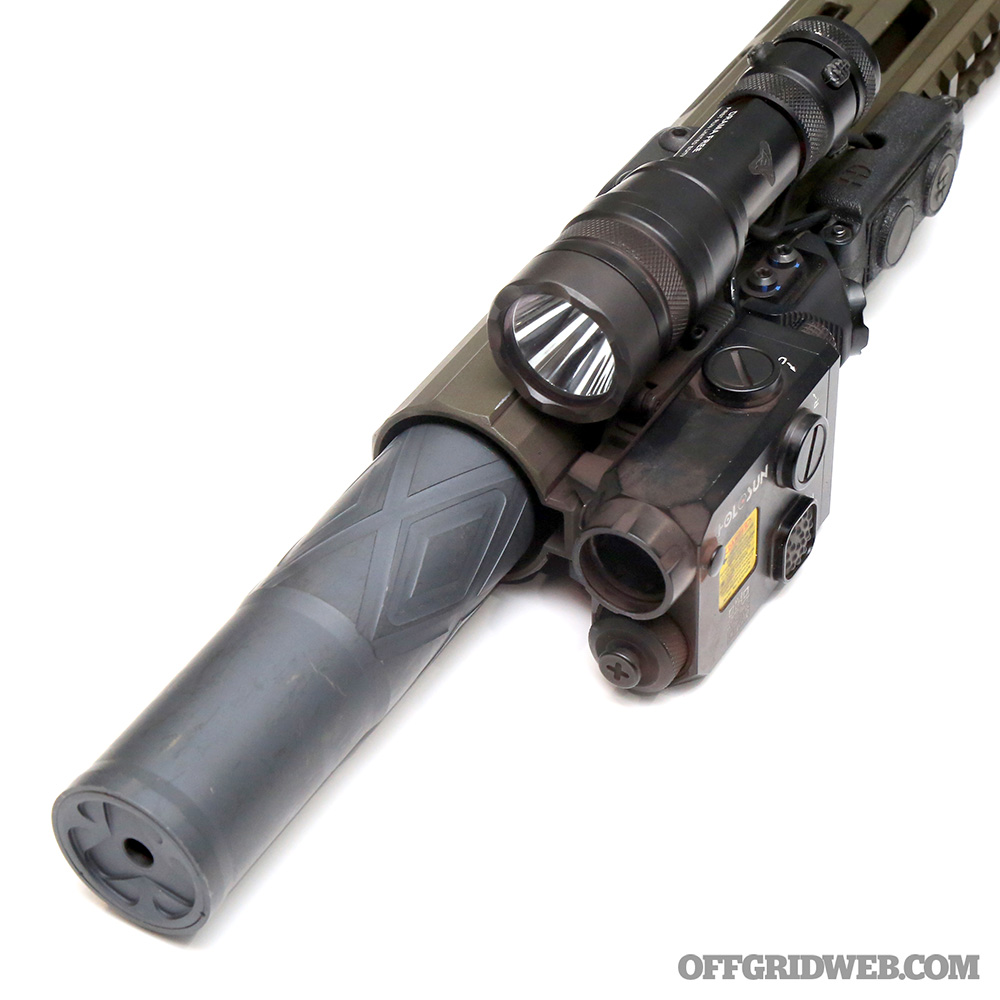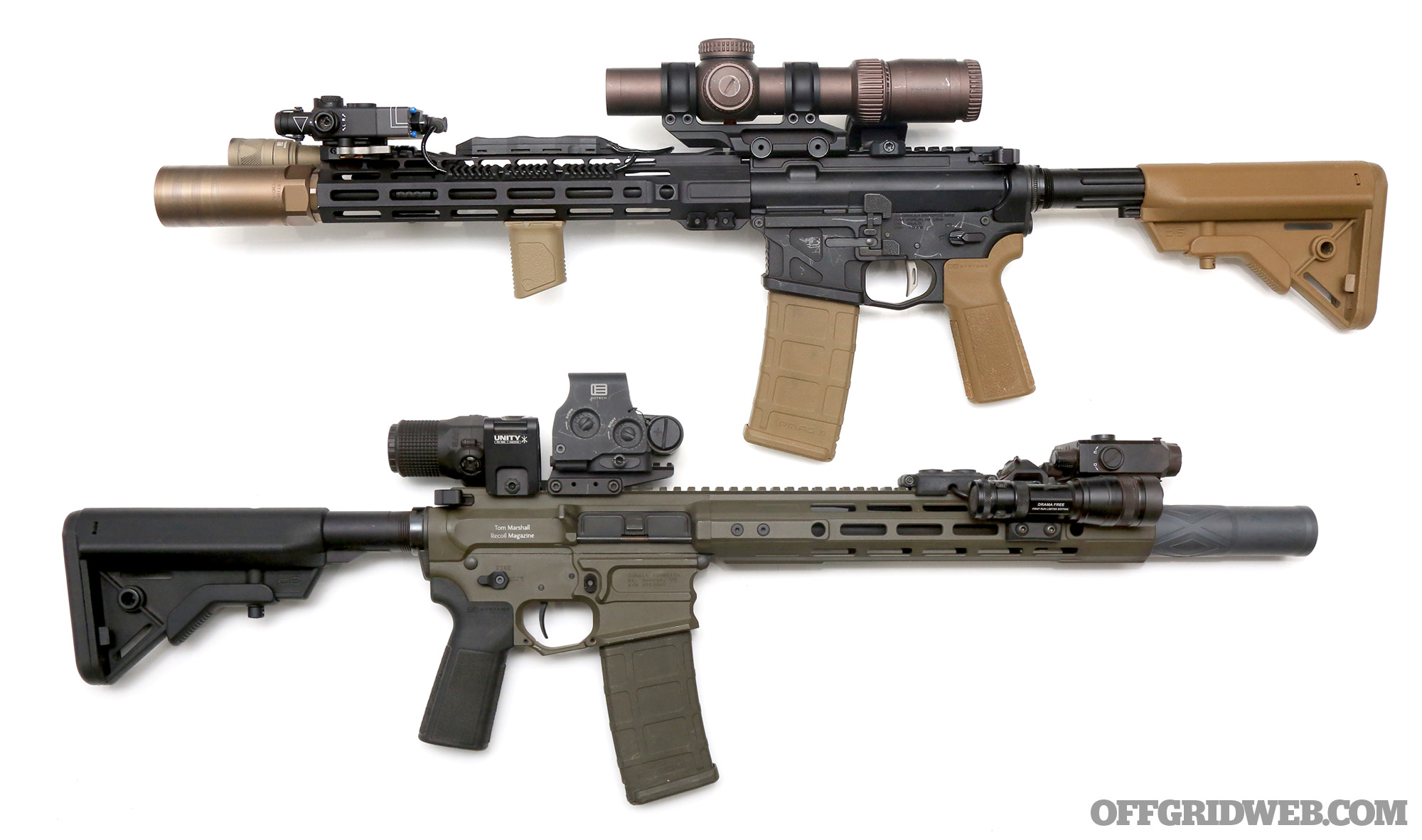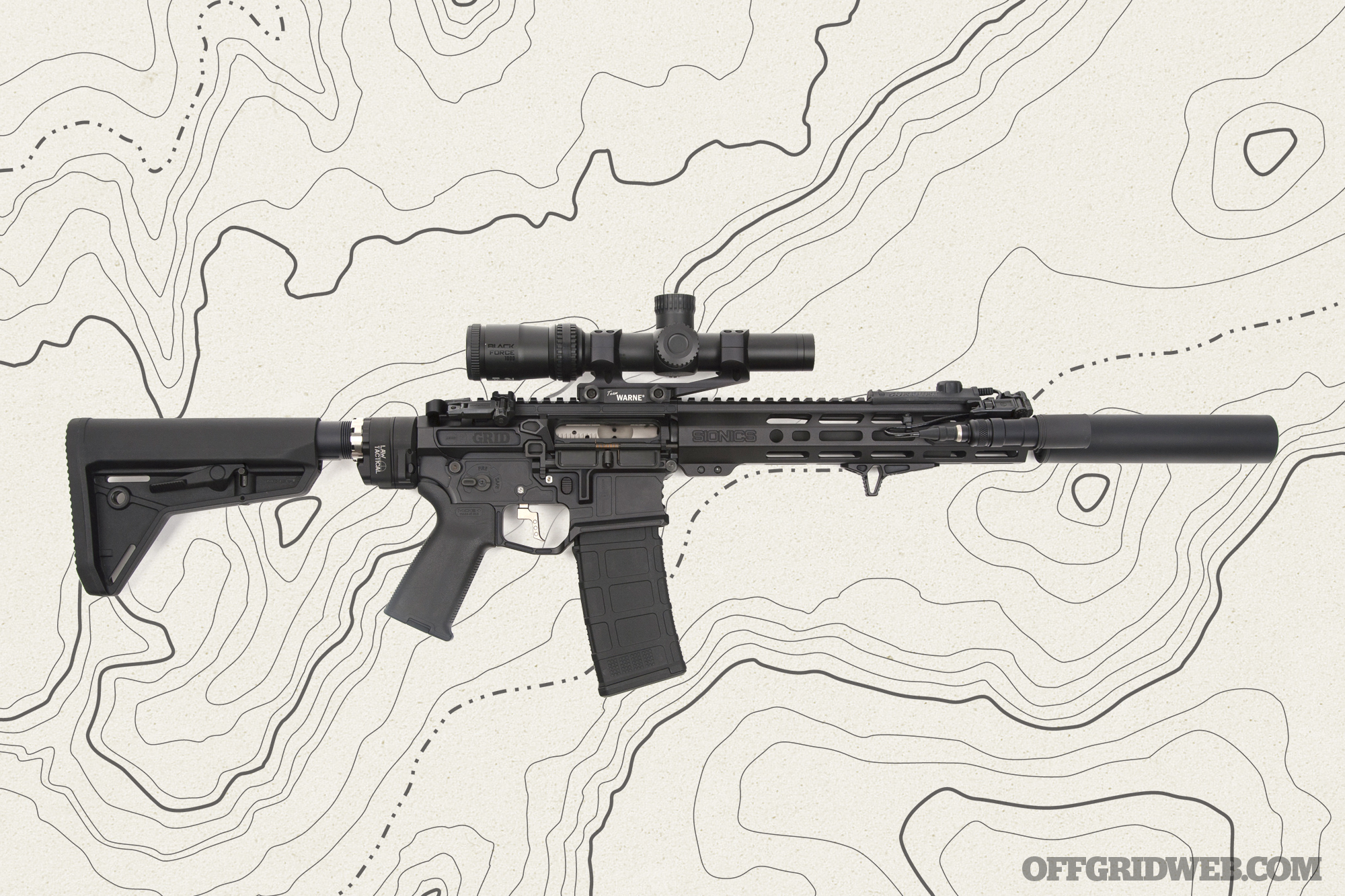“Excellence is never an accident. It is always the result of high intention, sincere effort, and intelligent execution; it represents the wise choice of many alternatives.” This ancient quote from Aristotle is applicable to many aspects of life, including the selection of gear for emergency preparedness. The idea of building a single rifle that could meet all of your survival and preparedness needs is akin to pulling Excalibur from its stone pedestal. Everyone thinks they’re the one person who can do it. But the reality is a little more … well … anticlimactic, leaving many of us to rely on a safe full of ARs for specific purposes like a golfer plucking clubs from his bag. How much can we condense the capabilities of various individual rifles into a single weapon? Is there a combination of the best AR-15 mods, accessories, and technologies that could eliminate half (or more) of our survival gun safe?
Considerations for the Best AR-15 Mods
While the other authors involved in this series will take their own approaches and make their own arguments, I started by reaching back to my routes in military reconnaissance. Two decades of near-constant warfare around the globe has given a lot of military leaders a deep reservoir of experience regarding how to build, configure, and run a rifle in spartan conditions. So, before I lay out the recipe for my ideal one-gun-solution, we need to examine an obscure but relevant slice of recent military history.
Photos By Niccole Elizabeth
The Recce Rifle Concept
Pronounced “wreck-y” — for heaven’s sake, please don’t say “reese” — the term recce is just military slang for “reconnaissance.” It’s primarily used by our Brit and Aussie brethren since, for most American grunts, “recon” is the preferred vernacular. Regardless of how you bastardize the word, reconnaissance teams rely heavily on stealth and maintaining a low profile to execute their missions. Because of this, recon teams are typically smaller in size than their assault force counterparts. And because of that, they often use specialized equipment and leverage technological and firepower advantages to offset the risk of operating in small groups behind enemy lines.
At some point in the late ’90s or early ’00s, reconnaissance elements within the SEAL community began formulating a firepower enhancement concept that would come to be known as the Recce Rifle. The premise was to have a rifle within the recce team that could see and hit farther than a standard issue M4 or M16, without having to rely on a dedicated sniper team. The recce rifle needed to have maximum commonality with the team’s issued carbine and not require any special training. The goal wasn’t to make more snipers, but to give standard riflemen on a recon team a stopgap capability between traditional infantry engagement ranges (normally 300 yards or less) and the long-range precision shooting executed by professional snipers with specialized heavy rifles (normally 600 yards or more). Furthermore, the inclusion of a quality magnified scope could aid in direct surveillance and intelligence gathering.
Without going too far into the minutiae, a template emerged from within the SEAL teams for an enhanced/accurized M4 carbine featuring a match-grade trigger, 16- or 18-inch stainless steel match barrel, and a variable-power scope. Otherwise, these rifles were mechanically identical to issued M4s — they even retained full-auto capability so that in an ambush or counter-ambush scenario, the recce rifleman could still perform traditional fire-and-maneuver with his squad. But the foundation was laid for a rifle that could excel both in close combat and at extended ranges with minimal mods, using commercially available off-the-shelf components.
Commercial Adoption & the Mini Recce
Above: The Cobalt Kinetics 12.5-inch BAMF Pro offers a pre-packaged mini recce solution constructed with premium components.
Soon after photos and anecdotes of the recce rifle made their way to the shooting public, similar-looking builds began popping up in internet forums — stainless match barrels, variable-power scopes, match triggers, and long, lightweight handguards. First, it was mostly military rifle enthusiasts trying to build clones of SEAL guns. But then the concept took on a life of its own. Elements from the special operations recce guns were being fused with similar traits found on 3-Gun competition setups, as civilian shooters began to realize they could have rifles that were both fast and accurate, and which performed equally well at 500 yards or across a hallway.
As AR-15 manufacturing continued to evolve, with engineering, metallurgy and quality control being pushed to the bleeding edge of what’s mechanically possible, the vaunted concept of the Recce Rifle evolved as well. Specifically, the growing availability of nearly aerospace-grade AR barrels has birthed the so-called mini recce rifle. The mini recce applies the same form factor we previously discussed with a shorter barrel length, making it even more optimal for the close-quarters end of the spectrum while maintaining match-grade abilities at the hundreds-of-yards line.
Above: We worked our Cobalt Kinetics mini recce through movement and unconventional positions at Greenline Tactical’s Combat Carbine course in the Utah high desert.
For reference, the first generation of recce rifles built by Naval Special Warfare armorers typically sported 16- or 18-inch barrels. For civilians, 18-inch stainless barrels were all the rage for a few years. Next, it was 16-inch barrels. Then, people started building recce-style rifles on 14.5-inch match barrels. Currently, we have a number of precision-manufactured stainless steel barrels in the 10.5- to 12.5-inch range delivering stunning accuracy for their size, fueling the mini recce trend. The recce/mini recce concept, proven by special reconnaissance operators and advanced by the aftermarket, is where I found the last rifle I may ever own and the first one I’ll grab when the world goes sideways. Read on as I explain my considerations for the best AR-15 mods for this particular application.
Receivers, Barrels, & Gas Systems
I’ll admit to copping a little bit of insider privilege in the sense that the barrel of my ideal survival gun is one I received as a prototype nearly two years before penning this story. However, by the time you read this, these barrels should be fully out in the wild and readily available.
Rosco Manufacturing, in conjunction with Aaron Cowan of Sage Dynamics, produced a 12.5-inch barrel dubbed the K9. The idea, in Cowan’s words, was to create a “performance duty barrel” that bridged the gap between the tough-as-nails machine gun barrels found in military or law enforcement rifles and the high-precision ones used by competitors and long-range aficionados. The resulting K9 barrel is made from 416R stainless steel that’s black-nitride-coated, featuring a 5.56mm NATO-spec chamber and military-standard 1:7 twist rate. The barrel sports a medium contour and a new, proprietary-length gas system they’ve dubbed “patrol length” — which sits in between carbine and mid-length. Patrol length aims to bring the smooth, efficient cycling of mid-length gas guns to shorter barrels, optimizing reliability with slightly increased dwell times. Cowan insisted the barrel would also need to run reliably with a suppressor. So, the patrol-length gas system also serves to cut down on the over-gassing and accelerated erosion that can take place when suppressing short guns with carbine gas tubes.
Above: A high-quality barrel and match trigger are high-priority components in a mini recce build, making hits at extended range possible in spite of the rifle’s reduced size.
I’m not saying 12.5-inch barrels are the only choice for short ARs, but I do believe that barrels between 11.5 and 12.5 inches are the best for survival applications. Shorter 10.5-inch guns are more concealable and offer great maneuverability in tight quarters, but cycle harshly and create premature wear issues. Longer 14.5- or 16-inch guns can take advantage of the mid-length gas system and offer higher muzzle velocities but get awkward in tight spaces and typically need to be broken down into halves for discreet transport.
Throughout this article you’ll see two separate AR builds. Both are configured in the mini recce format. Both feature the same 12.5-inch Rosco/Sage collaboration barrel. One rifle is a franken-gun built to test the very first K9 barrel I got my hands on. But the second rifle, the Cobalt Kinetics BAMF Pro, will feature these barrels as the factory standard in their 12.5-inch model. In addition to being the default for the BAMF Pro 12.5, I’m told that Rosco will be offering barrel and gas tube kits as stand-alone items if you prefer to build it out yourself.
Above: Contrary to our off-the-shelf rifle from Cobalt, this one was pieced together over the course of a year from carefully selected individual components to save weight and add capability. We fit both rifles with “K-can” style suppressors. The custom-built AR is wearing a 4.1-inch Rex Silentium MOD X.
Pros
The mini recce concept’s greatest advantage is offering a single rifle that’s fast, accurate, and reliable from across-the-room distance to whatever you, your barrel, and your ammo are capable of. In this case, I was able to run the Rosco/Sage 12.5-inch K9 barrel to 880 yards. When properly outfitted with a white light and infrared laser, the result is a rifle that is 0 to 800 yards capable — day or night, white light or NVGs — and still fits inside a duffel bag or larger pack without needing to be broken down. Even the addition of a short suppressor only brought us to a total 16.1 inches of “barrel length.” This makes the mini recce packable almost anywhere and powerful enough to put down most threats of the two- or four-legged variety. It’s nimble and comfortable in a CQB environment, or working in and around vehicles, but also retains much of the long-range performance of ARs twice its size. The idea that you must have an 18-, 20-, or even 24-inch barrel on your AR for it to work past 300 yards is antiquated at best, obstructionist at worst. If you’re looking for a true “one-gun solution” for a survival/preparedness carbine, carefully choosing the best AR-15 mods to craft a mini recce-style build may be ideal for you.
Cons
For as much as I love this concept, it’s not all sunshine and roses. Asking one rifle to do (almost) everything isn’t impossible. But it does require a very discriminating selection of the best AR-15 mods and specialized accessories. If you need to push an 11- or 12-inch barrel out to 500 yards and beyond, you’ll need a barrel up to the task, and not every one of them is. Likewise, you’ll also (most likely) need heavy-for-caliber match-grade ammo that plays well with said barrel. Good-quality glass in a solid mount is a must as well. Those are, in my mind, the essentials for getting a short rifle to perform at long distance. Lights, lasers, suppressors, and switches aren’t only extra cost, but extra weight. When I was working overseas as a government contractor, my issued gun sported a 10.5-inch barrel but still weighed close to 12 pounds when fully configured. Proper management of both total weight and available “rail estate” on your handguard is critical when you’re trying to build so much capability into a single rifle. Using skeletonized, titanium, or other lightweight components will help, but will drive the price up quickly and may negatively impact reliability in some cases.
Above: This Cobalt Kinetics AR is equipped with a 5.5-inch Odin Works Baja suppressor.
Then, there’s the ATF. If you’re going to build a short rifle, you’ll need to get it registered as an NFA item. There’s wait time and cost associated with this process. Can you build something similar to what you see here as a braced pistol? Yes, you can. However, at time of writing, the legal status of pistol braces is under some intense scrutiny. If the fear-mongers get their wish, your jack-of-all-trades braced AR may become illegal overnight. Even if braces don’t get banned, there has already been some talk to the effect that using a magnified optic on a braced pistol demonstrates “intent to circumvent” and could by itself bring you some heartache under the wrong circumstances. How much that deters you, if at all, from setting up a Mini recce with exactly the rearend you want is entirely a personal call. We provide the information; you make the decision.
Both of my builds are SBR’d, and there are some pros and cons to relying on a stamped gun for SHTF scenarios, but we’re going to address those concerns later in this series. In this particular instance, it was decided the pros outweigh the cons, and Form 1’s were filed.
Grips, Stocks, & Handguards
With approved tax stamps in hand, I fitted both guns with B5 Systems SOPMOD Bravo stocks. The SOPMOD Bravo is based off the larger SOPMOD stock, but deletes the battery storage compartments to shave a few ounces and create a slimmer profile. Their N23 pistol grips are also attractive to us in both size and grip angle. They come pre-textured on three sides, which is cool. But the backstrap is left slick, which isn’t. So, I had my friendly neighborhood gun-tinkerer, P4 Coatings, add a matching stipple to the backstrap.
The franken-build received a Short Angled Vertical Grip from Strike Industries (it’s also seen on the Cobalt in the range photos above). A low-profile, no-nonsense vertical “stub,” this grip gives me a consistent index point for my support hand that’s long enough to pull back against when managing recoil or driving the gun through target transitions, but also short enough to be wholly unobtrusive, even when stowed or concealed in an SBR bag.
Triggers & Ambidextrous Controls
Other than those mods, the BAMF Pro appears here as you’d see it on the shelf, in terms of receivers, handguard, and controls. These are meant to be premium-grade rifles and are appointed with an ambidextrous safety and mag release, as well as the venerable KE Arms DMR trigger. The DMR is a unique design in that the pull weight is fixed at 4.5 pounds, but the reset is adjustable by a set screw inside the cassette, which allows for a softer, longer reset or an immediate hard snap back to ready after the break. It’s a feature we’ve not seen elsewhere that allows you to fine-tune the feel of your single-stage trigger without inadvertently manipulating the pull to unsafe lightness.
Our proto build is based on an American Defense Manufacturing UIC lower receiver, which takes ambi controls one step further by incorporating a right-side bolt catch/release tab that can be used to drop the bolt on a fresh mag or lock it back for admin purposes. It’s conveniently placed behind the mag release for use with the trigger finger. We originally had a matching UIC upper, but swapped it with the Balios Lite upper from 2A Armament. The Balios does away with forward assist (something I’d argue is essentially an appendix on modern, high-quality ARs) and weighs a meager 5.8 ounces. I mated the Balios Lite with the 11.7-inch ION Ultra Lite handguard from SLR Rifleworks. With a svelte 1.35-inch internal diameter and M-LOK slots replacing most of the 12-o-clock rail, the ION Ultra Lite lives up to its name and helps balance the front end of the rifle against all of the peripherals I added to maximize capability. The weight savings afforded by these parts help keep a heavily laden rifle manageable in the hands, but with a price tag north of $500 for just the stripped upper and handguard, cost versus capability is a real struggle in the mini recce realm. Likewise, the trigger I used is a Rise Armament RA-535. This drop-in trigger also comes in at a premium price point but offers a crisp 3.5-pound break with zero excess movement before or after the break.
Optics: Red Dot, Prism, LPVO, & More
Quality optics are easily one of the best AR-15 mods for any rifle destined for defensive duty, especially when it comes to the mini recce blueprint. Accuracy at distance is a challenging feat for barrel lengths that don’t afford full powder burn or long engagement against the rifling. Magnification is essential for the distances involved, but within that requirement, there’s ample room for flexibility and personal preference. We’re going to look at three-and-a-half different options for how to integrate modern sighting technology into the mini recce platform. We’ll start with a bias for distance, move across the spectrum, and finish with a bias toward closer medium-range engagements …
LPVO + Red Dot, Separate
Low Powered Variable Optics (LPVOs) have become prolific on modern AR builds. First made mainstream on the 3-Gun competitive circuit, LPVOs can now be spotted in police patrol cars and in Special Operations gear lockers across the country. While it’s possible and acceptable to use the 1x setting on an LPVO for close-quarters shooting, you do lose speed and convenience over a red dot or holographic sight.
Above: Scalarworks LEAP scope mount and Arisaka Defense Offset Red Dot mount
The answer for many is adding a miniature red dot sight (MRDS) in tandem with the LPVO and leaving the latter at a midrange magnification for longer shots. This best-of-both-worlds configuration spawned an entire submarket for low-profile mounts to accommodate the MRDS. On my homebuilt mini recce, I’ve been using a Vortex Razor Gen III 1-10x in a lightweight Scalarworks mount paired with a Trijicon RMR on a stand-alone offset mount from Arisaka Defense.
Keeping the two mounts separate offers two advantages, in my practice. One is being able to place the red dot behind the LPVO or in front of it. This is purely shooter preference. Some folks find a forward-set red dot easier to pick up when canting the gun. Others swear by the rear mount, on account of it being closer to the eye. Regardless, a separate red-dot mount allows you to experiment with both — or even change the make and model of red dot — without laying a finger on the scope mount. The other advantage I’ve found is being able to run the red dot at a different height than the scope. I prefer mounting the scope lower to afford a better cheek weld on the stock, while mounting the red dot higher for faster heads-up shooting (as well as ease of use when passive aiming through night vision goggles). I know there are some taller, night-vision-compatible LPVO scope mounts, but I’ve found floating an NVG tube behind a scope tube to be a tricky proposition, and one I haven’t used especially often. So, my Scalarworks scope mount is a “standard” 1.54 inches tall, while the Arisaka red-dot arm pokes up a little higher at 1.93 inches.
LPVO + Red Dot, Integrated
The alternative method for pairing a red dot to an LPVO is to use a single mount that accommodates both.
Above: Badger Ordnance Condition One mount
My first optics setup on the BAMF Pro consisted of a Steiner T5Xi 3-15x scope and a Holosun 403C red dot mounted together on a Badger Ordnance Condition One mount. The Condition One features a small arm that bolts directly onto the one-piece scope base so that both optics are carried cleanly on a single mount. The Condition One’s red-dot arm also features unique geometry that centers the red dot directly over the bore line, in spite of the angular offset.
If you do have to use the red dot at any significant distance, having it centered over bore reduces the need for lateral holdovers created when you roll the weapon off-center to shoot. The dual-optic setup is especially useful in cases where the magnified optic has no 1x setting. While magnification makes it easier to get consistent hits past 600 yards, it deletes the 1x provision for close-in shooting.
Fixed Prismatic + Red Dot
Speaking of optics with no 1x setting, I also wanted to touch on the niche optic configuration that won’t seem to go away — the fixed-power prismatic with piggy-backed red dot.
Above: Vortex Spitfire and Venom optics, Arisaka mount. (Note: This mount is designed to cantilever a red dot slightly forward; for this Vortex prism, it was flipped to cantilever the optic rearward, positioning it appropriately for its eye relief.)
The concept was disseminated during the early years of Operation Iraqi Freedom when the 4x ACOG was the primary issued rifle optic. However, this failed to account for the amount of close urban combat being seen in theatre. I find them to be of limited use unless your threats are consistently at a known intermediate distance. But what they do offer is medium magnification in a minimal footprint compared to LPVOs. They’re smaller, lighter, and usually come with their own built-in mount. The example here embodies all of those advantages.
The Vortex Spitfire HD Gen II offers fixed 5x magnification and an option to piggy back a Viper or Venom red dot, weighing only 10.3 ounces with built in rail mount. If your daily environment is primarily urban or suburban where your magnification only needs to reach a block or two, this could be a leaner, lighter option to bring both magnification and close-quarters capability to a mini recce build. The top-mounted red-dot setup also positions the dot ideally for ambidextrous passive use under night vision.
Red Dot + Magnifier
Last but not least is the red dot or holographic sight augmented with a flippable magnifier.
Above: EOTech optics in Unity Tactical mounts
This combination is biased heavily toward close-in shooting, with a turn-on/turn-off option for some ancillary magnification when needed. It’s a capable, if imperfect, solution for dedicated shooting at longer ranges. But if your primary concern is close response with some added capability to reach down the block, or you just want some additional magnification to aid in threat identification or spotting, this might be the way to go. First-gen magnifiers were almost exclusively 3x, but there are now multiple options in 5- and 6-power to extend the effectiveness of this setup. Since #opticsmountsmatter, I went to Unity Tactical for their FAST riser rail and Flip-To-Center (FTC) adapter mount.
Even as magnified optics have gotten better, most flip-to-side mounts have remained largely unchanged. The ability to push the glass out of your way in a hurry is super convenient, but this leaves a big chunk of armored glass hanging off your rifle at a 90-degree angle. And since every flip-mechanism we’ve ever seen flips right, if you’re shooting lefty the flip motion is noticeably awkward. Unity’s FTC fixes these problems by reorienting the magnifier to flip straight up and down. This makes the rifle more balanced when the glass is tucked out of the way, and also significantly raises the height of both the dot and magnifier for a more heads-up orientation. It’s superior for fast shots at no-fail ranges as well as aiding shooting under night vision or with a gas mask on. We also removed the factory soft rubber cover from the EOTech G33 magnifier and replaced it with an Armored Magnifier Cover from HRF Concepts. This is a hard plastic clamshell that provides a little extra bump protection as well as more aggressive gripping surface when flipping the magnifier up and down.
Lights, Lasers, & IR Illumination
Above: The diminutive, custom Rex Silentium suppressor proved ideal for mini recce setups.
Speaking of forward controls, let’s talk about peripherals and accessories for an all-purpose preparedness rifle. I’m a strong believer that every rifle intended for serious use needs a quality weapon-mounted light. Being able to clearly identify friends and foes in low light or no-light conditions, and having enough light to effectively utilize your optics with or without the sun, are core competencies any gun must fulfill in order to qualify as real-world-emergency capable.
Weapon-mounted white light is the standard for using a rifle in darkness, but there are those who have taken the leap to integrate night vision into their preparedness plan. If you fall into this category (or are pinching pennies to get into this category), make sure your rifle is configured to take full advantage of the added capability. The two best ways to do this are to use optic mounts that are tall enough to work with night vision — as I mentioned in the previous section — and to include infrared (IR) lasers and/or illuminators on your rifle.
There are a number of IR lasers on the market, and none of them are inexpensive. My parts build has been sporting a Steiner DBAL-I2 for quite some time. This is one of the more compact laser options on the market, but the size and weight benefits come with the tradeoff of not having a built-in illuminator. It’s only a laser pointer (both green visible and IR). This works well enough in urban or suburban environments, where there’s consistent ambient light even after sundown, but when you start working in truly dark rural environments, the lack of illuminator becomes a noticeable hindrance to target ID and engagement. In order to compensate for the lack of illumination, my franken-build also sports a SureFire M600V Scout Pro. This light features a rotating head that can be switched to white light or IR light, and includes a built-in M-LOK mount that allows the light to pivot for optimal cant, which comes in handy when pairing it alongside a laser.
Above: Shorter handguards require thoroughly well-thought-out placement of all accessories and switches.
On the Cobalt BAMF, I mounted a Cloud Defensive REIN Micro, which was built entirely from scratch as a dedicated hard-use weapon light. Duty-focused features include a user-replaceable lens, dedicated remote with independent switching for momentary and constant-on, excess cable routing channels built into the remote body, and a redundant clicky tailcap switch wired wholly independent of the remote. The mounting studs on the side of the REIN’s body are compatible with SureFire Scout-style mounts, but the head, tail, and switching technology are all fully proprietary. With an output of 1,300 lumens and 55,000 candela, the REIN Micro measures up handily against any other light meant to serve on a rifle. I chose the Micro to minimize footprint on an already compact rifle. For testing purposes, I also swapped the factory body unit for Valhalla Tactical‘s Baldr replacement body. This uses the same 18350 battery but features an integral offset mount machined into the body which let us tuck the light in a little closer to the body without being impeded by the Cobalt handguard’s flared front end. If you want more power, the full-size REIN features 1,400 lumens and 60,000 candela, running on the larger 18650 battery.
So, when it came time to outfit the BAMF Pro, I decided to try out the Holosun LS321G, which includes a visible green laser, IR laser, and IR illuminator in one unit. I had the chance to test this in a near-zero-ambient-light environment and found the LS321’s illuminator to be effective well past 100 yards. In fact, I was able to pit the LS321 against a full-power, Mil-spec AN/PEQ-15. With the PEQ-15 on “low” setting, the Holosun’s output was nearly equal to that of the military-grade unit, making it an excellent civilian-available choice for those needing an illuminator in addition to an aiming laser.
Switches & Cable Management
We’re big believers in maximizing access to all critical controls with both hands. Whether clearing an off-side corner in a building, compensating for an injury, or handing your weapon off to a southpaw, there are a number of reasons you may need to activate controls with either hand. A decade ago, I was against using remote tape switches for things like lights and lasers as the technology was somewhat fragile and unreliable. That time has since passed, and the robust electronics in next-gen weapon lights like the REIN have made the argument all but obsolete. Therefore, tape switches mounted at the 12-o’clock position on the handguard are probably the easiest way to ensure your manual-of-arms remains symmetrical, regardless of which hand is on the handguard.
Above: Placing switches along the 12-o-clock axis allows for a fully mirrored manual of arms. Note the tight cable management on both setups — this one is using spare cable routing built into the REIN’s remote switch.
In both cases, I turned to Unity Tactical for switching solutions. While the REIN Micro on the BAMF Pro comes with its own proprietary remote, the Velcro-on tape switch included with the LS321 IR Laser took up a lot of room on a handguard that’s already packed pretty tightly. My answer was the Unity Hot Button, an extremely compact stand-alone push-button remote with a Crane standard plug compatible with most U.S.-made IR lasers on the market today. The cable routing channels on the REIN’s remote were able to accommodate leftover wire from both the REIN itself and the Hot Button. To ensure I had absolutely no dangling slack from either button, I added a single Micro Cable Clip from Emissary Development. These clips sport an aggressively minimalist design with an open loop just large enough to clip a remote wire onto.
Above: Another example of neat cable management using Strike Industries Siegen M-LOK plugs to keep excess slack under control.
Since my home-build features a stand-alone laser, and relies on the white light to double as an illuminator, I used the TAPS (Tactical Augmented Pressure Switch) Sync — jointly designed by TNVC and Unity Tactical. The TAPS is a single switch with dual leads and dual buttons, meaning you can operate both your light and laser from a single remote. As a further benefit, the TAPS series of switches come out of the box able to clamp onto a Picatinny rail or direct-mount into M-LOK slots. The SLR handguard features several M-LOK slots on the top axis, so I stripped off the rail clamps and threaded the TAPS directly into the Ultra Lite tube for a slender no-bulk layout that remains fully ambidextrous. The TAPS doesn’t have on-board cable management, so I added a couple of Strike Industries Siegen M-LOK inserts. The Siegen is a soft rubber M-LOK slot plug with a channel through the center that essentially buries excess wire underneath itself. Like the Emissary Micro Clips, the Siegen plugs pull loose wires against the handguard rail and protect them from bumps, pinches, and snags. The TAPS Sync variant is programmed in a number of different variants. This one will activate the light only with one button and, for night vision use, the other button will activate both light and laser simultaneously. This gives me an aiming laser and background illumination at the push of a single button.
While I have full faith and confidence in modern remote switches like the REIN, TAPS, and Hot Button, I also advise strict cable management when you do use them. Fortunately, close to a dozen different products have popped up in recent years for this purpose alone. With so many options, there’s no excuse to have loose wires dangling off your handguard.
Suppressors
Above: Odin Works‘ Baja suppressor nested perfectly into the flared front-end of the Cobalt BAMF handguard.
Depending on your situation and perceived needs, adding a suppressor could be an attractive option. But the last thing you want is to expend the effort cramming all this capability into a small rifle that grows 6, 8, or 10 inches when you thread a can to the front. As suppressors become more advanced, so will the ability to shrink them. The trade-off for reduced length will always be reduced effectiveness, but it may be a worthwhile compromise when trying to keep your carbine to a more discreet footprint.
The copper-colored can you see in this article is a Rex Silentium MOD X. Rex Silentium offers a high degree of customization in their cans, and I chose to make use of this with a minimalist three-baffle design. It’s far from “Hollywood quiet” but measures a scant 4.1 inches overall. Direct-threading it to the muzzle leaves me with an effective barrel length just a hair over 16 inches, which is still small enough to fit inside some duffels or packs without having to be broken down. It still takes the edge off the increased concussion of a shorter 5.56mm AR-15. If you have to grab this rifle and fend off a threat without putting on ear protection first, it’ll save your hearing and help you maintain auditory awareness of your environment.
Conclusion
Building a single do-all mini recce rifle that’s ready to react to an array of threats is no small undertaking. It requires a holistic “system-based” approach where each individual component, down to cable clips and optics mounts, must work in harmony to wring every ounce of ability out of a rifle that’s small enough to tuck between car seats or zip up in a gym bag. But, if you can afford the time and money to choose the best AR-15 mods for your needs and make it work right, the result of your efforts could be the “one gun to rule them all” that’ll serve you faithfully regardless of what the world throws at you.
Glossary of Sources for Our AR-15 Mods
Here’s an alphabetized list of the companies whose parts were featured in this article:
- 2A Armament > www.2a-arms.com
- American Defense Manufacturing > www.admmfg.com
- Arisaka Defense > www.arisakadefense.com
- B5 Systems > www.b5systems.com
- Badger Ordnance > www.badgerordnance.com
- Cloud Defensive > www.clouddefensive.com
- Cobalt Kinetics > www.cobaltkinetics.com
- Emissary Development > www.emissarydevelopment.com
- Holosun > www.holosunoptics.com
- HRF Concepts > www.hrfconcepts.com
- Odin Works > www.odinworks.com
- Unity Tactical > www.unitytactical.com
- Rex Silentium > www.rexsilentium.com
- Rise Armament > www.risearmament.com
- Rosco Manufacturing > www.roscomanufacturing.com
- Scalarworks > www.scalarworks.com
- Steiner > www.steiner-optics.com
- Strike Industries >www.strikeindustries.com
- SureFire > www.surefire.com
- Trijicon > www.trijicon.com
- Valhalla Tactical > www.valhallatactical.com
- Vortex Optics > www.vortexoptics.com
More Survival AR-15 Articles
Above: Our OFFGRID-themed 11.5-inch custom AR-15 is equipped with an Ascend Armory receiver set, LAW Tactical folding stock adapter, Sionics barrel and handguard, Gemtech suppressor, and more.
Are you interested in reading more about AR-15 mods and custom builds? If so, check out some of our previous articles:
- Build Sheet: Our Survivalist AR-15 SBR
- Aiming at Entry-Level AR-15s for Survivalists
- RECOILweb: Turning Your AR-15 into an M-16
The post Tailor-Made ARs: Choosing the Best AR-15 Mods appeared first on RECOIL OFFGRID.


